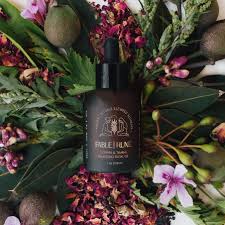
How to Use Tamanu Oil for Acne: A Complete Skincare Guide
If you’ve never experienced acne or breakouts, consider yourself lucky—because for many of us, dealing with inflamed pimples, clogged pores, and red patches is a long-term skin battle we wish we could escape.
For those with acne-prone skin, the quest for a solution often becomes an emotional rollercoaster, leading us through shelves of products and countless routines in search of calm, balanced skin that finally feels healthy.
It might seem counterintuitive to apply oil on skin that’s already oily or acne-prone, but certain oils like tamanu oil can actually work wonders to treat and soothe flare-ups without making things worse.
This ancient, nutrient-dense oil may look heavy at first glance, but tamanu oil has proven to be a skin savior, thanks to its rich fatty acid content, antibacterial effects, and natural wound-healing abilities.
In this guide, we’ll break down everything you need to know about tamanu oil—why it works, how to apply it correctly, and how to blend it into your skincare routine without clogging your pores or causing irritation.
Is Tamanu Oil Good for Acne-Prone and Oily Skin?
Yes, tamanu oil is surprisingly ideal for acne-prone and oily skin types, especially when used correctly and in moderation to avoid the risk of congestion or heaviness from its naturally rich, thick texture.
Acne products often strip the skin’s natural oils in an attempt to control oil production, which may backfire by triggering the skin to produce even more oil, leading to clogged pores and more breakouts over time.
Tamanu oil takes a gentler, more nourishing approach to managing acne, delivering healing fatty acids and anti-inflammatory compounds that calm the skin instead of irritating or drying it out.
It restores moisture to the skin while also soothing inflamed blemishes, reducing redness, and helping repair the skin’s protective barrier, which is often damaged by harsh acne treatments and environmental stressors.
This makes tamanu oil a great alternative for those who want to treat their skin without causing the common side effects like flaking, peeling, or that dreaded tight and itchy feeling.
Can You Apply Tamanu Oil on Pimples?
Yes, tamanu oil can be applied directly to pimples and breakout-prone areas due to its potent antibacterial, antifungal, and anti-inflammatory properties that actively help fight acne-causing bacteria on the skin.
Despite its thick texture, it penetrates the skin well and works to reduce swelling, shrink blemishes, and help existing pimples heal faster, leaving less scarring and calming the overall appearance of inflammation.
In fact, a 2015 study conducted in the South Pacific found that tamanu oil showed strong antibacterial activity against Propionibacterium acnes, the primary bacteria responsible for causing breakouts.
This ability to neutralize acne-causing bacteria makes tamanu oil a great spot treatment option that not only works to shrink blemishes but also supports skin regeneration at the same time.
That said, too much of a good thing can lead to clogged pores—so if you have very oily skin, consider diluting tamanu oil with a lighter oil like jojoba or using it alongside tea tree or lavender essential oils.
Does Tamanu Oil Help with Acne Scars?
Yes, tamanu oil contains regenerative properties that can help reduce the appearance of acne scars by encouraging healthy cell turnover and protecting the skin from free radical damage with its antioxidants.
Its high content of calophyllolide—a compound unique to tamanu oil—stimulates collagen production, helping to gradually fade dark spots, post-inflammatory hyperpigmentation, and pitted scars.
By improving the skin’s natural repair process, tamanu oil makes acne scars less noticeable over time, restoring smoother texture and more even skin tone with consistent and careful use.
How Often Should You Use Tamanu Oil for Acne?
Because tamanu oil is somewhat comedogenic (meaning it can clog pores if overused), it’s best to start with applying it just two to three times per week, especially if your skin is sensitive or prone to congestion.
To maximize its benefits without overwhelming your skin, cleanse and exfoliate your face first, then apply a few drops of tamanu oil to the affected areas, gently massaging it in with clean fingertips.
If you’re using active ingredients like salicylic acid, benzoyl peroxide, or glycolic acid, apply those products first and allow them to absorb fully before layering tamanu oil on top to lock in moisture.
This combination helps the skin heal from existing breakouts while preventing future flare-ups and maintaining a balanced, hydrated environment that discourages excess oil production and clogged pores.
As your skin adjusts, you can slowly increase frequency to daily use if no irritation or clogged pores develop, always paying close attention to how your complexion reacts.
Can You Use Tamanu Oil on Your Entire Face?
Yes, you can apply tamanu oil to your whole face, especially if your skin is dry, sensitive, or dealing with irritation—just be sure to patch test first to make sure your skin reacts well to the oil’s natural compounds.
To perform a patch test, dab a small amount behind your ear or on your jawline and wait 24 hours to ensure there are no signs of redness, itching, swelling, or breakouts before using the oil more widely.
Once cleared, apply tamanu oil to clean, slightly damp skin after cleansing and toning, either as a final moisturizing step or mixed with a lightweight serum or cream to customize your skincare routine.
Those with dry or combination skin will find tamanu oil especially soothing during colder months when wind and low humidity strip the skin of hydration, causing flaky patches and redness.
Oily skin types may prefer applying the oil only to specific problem areas rather than the whole face to prevent potential pore clogging or feeling greasy throughout the day.
Will Tamanu Oil Clog Pores or Cause Breakouts?
Tamanu oil has a moderate comedogenic rating, which means it may clog pores for some people—particularly those with oily or acne-prone skin—if it’s applied too heavily or without balance from other skincare.
To prevent congestion, avoid using tamanu oil in large quantities or multiple times a day, and consider combining it with non-comedogenic ingredients that support clear skin and help regulate sebum levels.
Try using tamanu oil every other day or only at night as a treatment step, focusing on the areas most in need of healing rather than the entire face, especially if you’re prone to frequent breakouts.
Maintaining a consistent skincare routine that includes gentle cleansing, chemical exfoliation, and lightweight hydration will also help keep your pores clear and prevent buildup from tamanu oil use.
Always remove makeup thoroughly and double cleanse if you wear SPF or foundation, so that tamanu oil works on a clean canvas and doesn’t mix with leftover residue or trapped debris.
How Long Does Tamanu Oil Last After Opening?
Tamanu oil is relatively stable and has a long shelf life, lasting up to five years if it’s cold-pressed, high quality, and stored in a cool, dark place away from direct sunlight or heat.
You can usually recognize good-quality tamanu oil by its rich, dark green color and thick, nutty scent—lighter or overly refined oils may have fewer benefits and expire sooner.
Store your bottle in a bathroom drawer, cabinet, or even the refrigerator to preserve its potency and prevent oxidation that can weaken the oil’s healing and antioxidant properties over time.
Always check the expiration date on the packaging and discard the oil if it starts to smell rancid, change color, or feel unusually sticky or separated when poured from the bottle.
Using expired tamanu oil can irritate the skin or cause breakouts, so it’s important to monitor its freshness and use it within the recommended time frame for best results.
Tamanu Oil: A Gift from Nature with Centuries of Use
Tamanu oil isn’t just a trendy beauty oil—it has been used for centuries by Polynesian cultures, who treasured it as a sacred remedy for wounds, skin infections, and inflammation long before it became a skincare staple.
This traditional “green gold” was believed to be a divine gift from the gods, and its powerful skin-healing abilities were passed down through generations and eventually integrated into modern holistic skincare.
Now, tamanu oil enjoys well-deserved recognition around the world for its ability to calm acne, fade scars, hydrate deeply, and promote healthy skin without relying on synthetic ingredients.
When used with intention and care, this botanical oil can be a powerful ally for those navigating acne-prone skin and looking for a more natural, balanced approach to skin recovery.
As always, consistency and patience are key—no oil can deliver miracles overnight, but tamanu oil offers a gentle, supportive pathway toward clearer, more resilient skin.
Ready to Try Tamanu Oil? Final Tips Before You Begin
Always choose pure, cold-pressed tamanu oil with no added fillers, fragrance, or preservatives to get the most out of its healing benefits without risking unnecessary irritation or reactions.
Start small, track your skin’s response, and incorporate tamanu oil into your routine gradually alongside other proven acne-fighting ingredients that match your specific skin needs and goals.
And don’t forget—if you’re curious to learn more about how natural oils can transform your skincare, follow us on Instagram for tips, exclusive offers, and expert insights into all things glow and balance.


